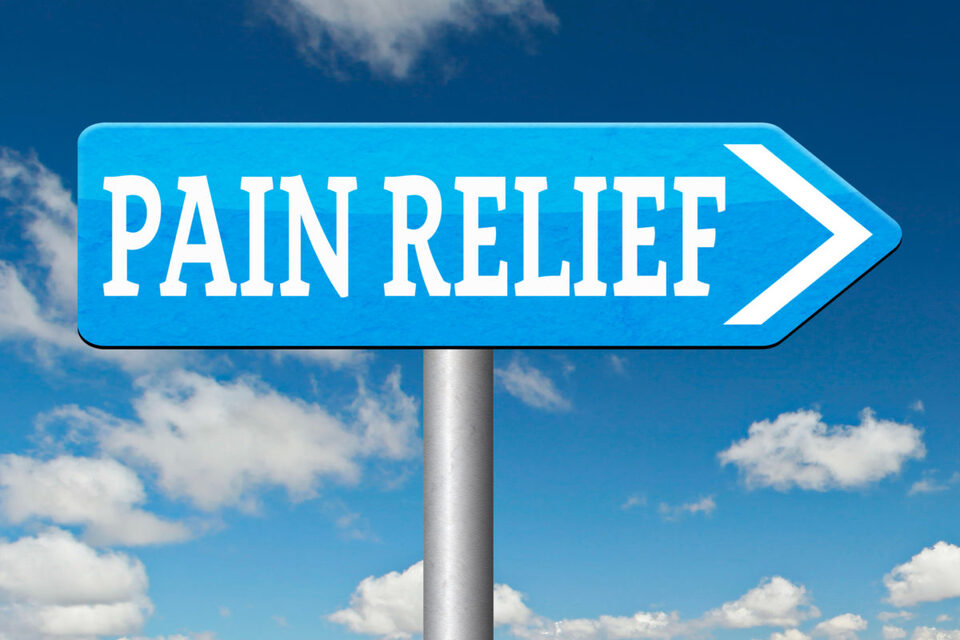
Mindfulness is a type of meditation that promotes awareness through paying attention, on purpose, in the present moment, nonjudgmentally. It is well established that it can help people manage stress and anxiety. A recent study published in JAMA Psychiatry found that a guided mindfulness-based stress reduction program was as effective as the common antidepressant drug escitalopram (brand name Lexapro) for patients with anxiety disorders.
That’s good news for chronic pain sufferers because studies have shown that chronic pain is associated with anxiety disorders. The even better news is that new research indicates that mindfulness can be helpful in treating pain itself. According to a study that appeared in the journal Pain, “Mindfulness meditation significantly reduced behavioral and neural pain responses when compared to the controls.”
The study was conducted by researchers at the University of California San Diego School of Medicine and was designed to measure the effects of mindfulness on pain perception and brain activity. The authors reported that mindfulness meditation altered connections between areas of the brain associated with pain perception in ways that have been shown to reduce pain levels.
How the pain and mindfuless study measured the effects
On the first day of the study, each of the 40 participants received an MRI scan of their brain while painful heat was applied to their leg. Participants were also asked to rate their average pain levels after being exposed to the heat stimuli.
Participants were then divided into two groups. Those in the mindfulness group completed four separate 20-minute mindfulness training sessions. Members of the control group spent their four 20-minute sessions listening to an audio book.
On the final day of the study, each participant received another MRI brain scan while having painful heat applied to their leg. Those in the mindfulness group were instructed to meditate during application of the heat stimuli. Those in the control group were instructed to rest with their eyes closed.
The pain and mindfulness study results
Participants who were actively meditating reported, on average, a 32 percent reduction in pain intensity and a 33 percent reduction in pain unpleasantness.
According to UC San Diego Today, when researchers analyzed brain activity, they found “that mindfulness-induced pain relief was associated with reduced synchronization between the thalamus (a brain area that relays incoming sensory information to the rest of the brain) and parts of the default mode network (a collection of brain areas most active while a person is mind-wandering or processing their own thoughts and feelings as opposed to the outside world).” They found that the more these areas were deactivated, the more pain relief the participant reported.
When interviewed, Fadel Zeidan, PhD, associate professor of anesthesiology at UC San Diego School of Medicine, said, "For many people struggling with chronic pain, what often affects their quality of life most is not the pain itself, but the mental suffering and frustration that comes along with it. Their pain becomes a part of who they are as individuals -- something they can't escape -- and this exacerbates their suffering."
He also said that researchers “are on the verge of discovering a novel non-opioid-based pain mechanism in which the default mode network plays a critical role in producing analgesia.”
Find Healthcare Providers Who Offer Mind/Body Medicine for Pain
An interview with a mindfulness teacher
To learn more about the practice of mindfulness, the Alternative Pain Treatment Directory spoke with Immanuel van Tonder. Van Tonder has a Bachelors Degree in Divinity and completed post-graduate studies in Mindfulness-Based Interventions at South Africa’s University of Stellenbosch & IMISA. He has 30 years of experience teaching, speaking, and counseling. He came to the U.S. in 2021 to serve as Associate Pastor at Christ Community Reformed Church in Clifton Park, New York.
Van Tonder reported that he was first exposed to mindfulness when he read Wherever You Go, There You Are: Mindfulness Meditation in Everyday Life by Jon Kabat-Zinn. Kabat-Zinn is a well-known pioneer in teaching mindfulness to patients with intractable medical conditions, including chronic pain.
Van Tander currently teaches mindfulness at the Art of Life Mindfulness Center, which offers live courses as well as free online courses.
Is mindfulness a religious practice?
No, mindfulness creates a space for all regardless of religious beliefs, and that’s one of the things I love about it. With that said, mindfulness often enhances spirituality for those who are spiritually minded.
Can anyone practice mindfulness or does it require a certain personality type?
Mindfulness is something that everyone has within them. Everybody has the capacity to pay attention and the capacity for being compassionate and affectionate. Those are the cornerstones of mindfulness or awareness. While we all have these wonderful gifts, we tend not be aware of them or know how to use them.
What are common misconceptions regarding mindfulness?
People think it’s about fighting your thoughts and emptying your mind and controlling your emotions. That’s the opposite of what mindfulness is. Mindfulness is not about quieting the mind but transforming our relationship with the mind. It’s about cultivating the ability to no longer be hijacked by thoughts and emotions. If you feel like your thoughts are like monkeys jumping from one branch to the other, you just kindly observe how the mind is now without needing to fix the mind. Loving awareness itself is powerful to stabilize you to be with whatever you find in your inner world. Then we respond from this rooted place of stability and wisdom, enabling us to discern and discriminate which thoughts and feelings are worth listening to and acting on, and which ones aren’t. So, the next time you sit down to meditate, instead of trying to find a way to quiet your mind, simply make the decision not to engage with your mind and discover your identity beyond thoughts and feelings.
How has mindfulness helped you in your own life?
For me, mindfulness isn’t just a superficial thing that you do on the side. It’s a way of being.
As an example, I can tell you how mindfulness has helped me with the anxiety and stress that I experience when preaching in a language that is not so well known to me (van Tonder’s native language is Afrikaans). When I’m walking up to the pulpit, I focus on feeling my feet on the ground. I then hold on to the pulpit with my hands and ground myself where I’m standing. That puts you in a totally different space. Instead of being caught up in the anxiety, you are grounded in awareness.
People say, “You shouldn’t be anxious or stressed. You’re a mindfulness teacher,” but that’s the wrong way of seeing mindfulness. You are going to have anxiety and stress, so you need to be with the anxiety and be with the stress in a grounded, connected way instead of being caught up in the emotion and rejecting the emotion.
Does the same principle apply to managing pain?
Yes, it’s the same with pain. The first thing that we want to do is get rid of the pain, but we need to start by creating space for whatever pain we feel. Be curious about how the pain shows itself. There are so many different pains—is it sharp, dull, stabbing, burning, blunt, edgy, tense, fluctuating? We tend to just say we have pain without being aware of what kind of pain it is. You need to investigate the pain. Just by investigating it, you are already decentering it. Your identity is becoming dislodged from the pain.
It’s interesting to note that my wife was a medical doctor in South Africa, and she found that people weren’t attentive to their own pain and weren’t able to convey the quality of their pain. They just knew they had pain in a certain area of their body.
By investigating our pain with a curious mind, our pain becomes more fluid. If you really investigate it, you discover that pain isn’t solid. It fluctuates and it changes. It’s just that our mind contracts around it and creates this idea that we are always in pain and that our whole future is muddied up by it. Notice how your mind creates a story around the pain that creates more suffering on many levels of being.
Mindfulness teaches you to be only in this moment. Think of an hourglass. Instead of focusing on all of the sand in the hourglass, focus on this grain in this moment. Don’t focus on what lies ahead. Focus on this moment of pain—to create space to be with this grain of pain.
We shared with our readers the study that appeared in the journal Pain. What are your takeaways from the study?
Scientific testing found that mindfulness interrupts the communication between the brain areas that produce the sense of self and the areas where pain is sensed. It showed that you can really dislodge your identity from your pain. It’s still there, and you are aware of pain. But with mindfulness, you are able to say, “I am not my pain.” Researchers made this conclusion not by some sort of wishy-washy feedback--they saw this through neurological MRI scans.
So, while you will still have pain, the optional suffering that goes with pain that is created in your inner world and in your thoughts is lessened. We can’t take away the pain. The pain will still be there.
Can you give me an example of how you have used mindfulness to manage your own physical pain?
For the past six months, I have been dealing with deep muscle pain in my left arm that makes it very difficult to sleep. I found myself getting angry, frustrated, and impatient that it’s not getting better even with the exercises that I’m doing. Now, when I wake up with the pain, the first thing that I do is give myself some form of compassion. If there is one force that is the most powerful healing force, it is love and compassion and kindness. We offer it very easily to other people but not to ourselves. When it comes to our self-talk, it’s important to remember that somebody is listening. That is ourselves. The way that we talk to ourselves and about ourselves in our inner world creates much more suffering. That’s what the science shows—that mindfulness can help us with that optional suffering.
After offering myself compassion, I softly and without frustration touch the part of my arm where I am feeling pain. It’s important to respond to the pain with kindness. You could also place one hand on your heart. By giving some kind of physical sign of self-compassion, you are changing the whole dynamic. It’s like dominoes. If you wake up and are angry and frustrated, you will stay awake because you are creating negative energy. Another thing that I do is feel the duvet and blankets on the bed and appreciate the feeling of being cozy. That creates a different experience.
By practicing mindfulness, our circle of comfort grows. People think they will be comfortable only if they have no pain or other issues in their lives. But if we grow our circle of comfort to be much wider, we can be comfortable while experiencing physical pain or painful situations in or lives.
Can you give an example of one of your students who has had success in managing their pain through practicing mindfulness?
One of my students has severe back pain. She would tell you that mindfulness has had a significant impact on her pain. She is using an app called the Insight Timer on a daily basis, and she said that it has made a world of difference.
Note: Insight Timer is a free app that features a meditation timer and the world’s largest repository of guided meditations and other recordings designed to help relieve stress, improve sleep, and improve overall well-being.
Do you have any particular meditations that you recommend for beginners?
I often recommend the meditations of Mark Williams which are free on the Insight Timer app. Williams is an Emeritus Professor of Clinical Psychology at the University of Oxford
Are there any books that you would recommend for those suffering from chronic pain?
I would recommend Outsmart Your Pain: Mindfulness and Self-Compassion to Help You Leave Chronic Pain Behind, by Christiane Wolf. In my opinion, it’s the best book out there on the subject.
Are there any other resources that you can recommend?
UMass Memorial Health will be offering a four-week online course for people experiencing chronic pain. I’m not involved with the program, but it might be something that your readers would want to investigate.
Is mindfulness something people can learn on their own?
Mindfulness can be dangerous if you do it in a way that doesn’t embrace the core values—especially with anxiety. For example, focusing on your breath when you are anxious could be detrimental. For that reason, I believe that practicing mindfulness requires some guidance.
Do you have any final thoughts?
For those who are skeptical, I say test mindfulness for yourself and see what it does.
Christine Graf is a freelance writer who lives in Ballston Lake, New York. She is a regular contributor to several publications and has written extensively about health, mental health, and entrepreneurship.
Products You Might Like
Related Articles
Six Ways to Use Your Brain to Heal Your Pain
Why Fear Increases Pain and How to Stop It













Comments